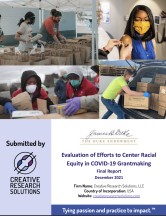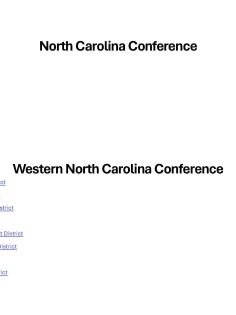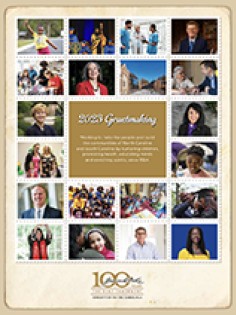Resources
Using a Collective Impact Model in Communities to Improve the Physical Environment
The physical environment — the places where individuals live, work, and play — can cause or prevent serious health conditions including chronic diseases and obesity. In North Carolina, the Collective Impact Model serves as the foundation on which multisector community coalitions can address environmental and policy barriers for improved health.

Oral Health in America
This report highlights the most promising new approaches for improving oral health and for ensuring that all Americans enjoy its benefits. Finally,

Organization Logos and Usage Guidelines
The Endowment logo may be used in compliance with our guidelines. For additional formats or questions about use, please contact us.

Evaluation of Efforts to Center Racial Equity in COVID-19 Grantmaking
This report from Creative Research Solutions evaluates the Endowment’s effort to center racial equity in its grantmaking response to the COVID-19 pandemic.

Benjamin N. Duke Scholarship Program
This Duke University video has an inside look at the man behind the B.N. Duke Scholarship Program.

Clergy Health Initiative Retirement Report - 2022
This report presents findings on the well-being of United Methodist clergy ages 55 and older, and the well-being of clergy retired 4 years or fewer.

Guidelines for the Heritage Conference Room
Adjacent to The Duke Endowment lobby, the Heritage Conference Room provides guests easy access to building services and a perfect meeting space for smaller groups.
Maximum Capacity: 10

Guidelines for the Semans Conference Center
Named after James B. Duke’s great niece and Endowment Trustee of 55 years, The Mary Duke Biddle Trent Semans Conference Center is a state-of-the-art, highly versatile space for mid- to large-size groups of almost any configuration.
Maximum Capacity: 144

Guidelines for the Benjamin N. Duke Conference Room
Oriented to capture natural light and overlooking the courtyard, the Benjamin N. Duke Conference Room is a perfect meeting space for small groups and committee meetings.
Maximum Capacity: 8

2020 Annual Report: Roots for Growth
Learn how we systematically reviewed our work in 2020 through the lens of racial equity, diversity and inclusion. While we have a long history of working across diverse communities, we know we have room for improvement. That is why we chose “Roots for Growth” as the theme for the 2020 annual report. This download includes the full annual report with grantmaking and financial addenda.

Mobilizing Rural Churches to Improve Early Childhood Literacy in North Carolina
This May 2021 report by Project Evident shows how The Duke Endowment is using evidence to build and scale a summer literacy program in rural communities.

A Technical Assistance Curriculum for Expanding Sustainable School-Based Oral Health Programs in the Carolinas’ Dental Safety Net
School-based oral health programs (SBOHPs) provide opportunities to address oral health inequities by providing convenient access points for care. No published guidelines on SBOHP implementation existed. Our work describes how philanthropic, public, and academic organizations partnered to support dental safety net providers with designing comprehensive SBOHPs in North and South Carolina.

Recent Uploads
List of Eligible Churches
pdf | October 30, 2024
2023 Annual Report - Committed to the Carolinas: Reflections on a Century
zip | September 9, 2024
2023 Grantmaking Overview
pdf | September 7, 2024
The Duke Endowment Overview Flyer
pdf | September 6, 2024




